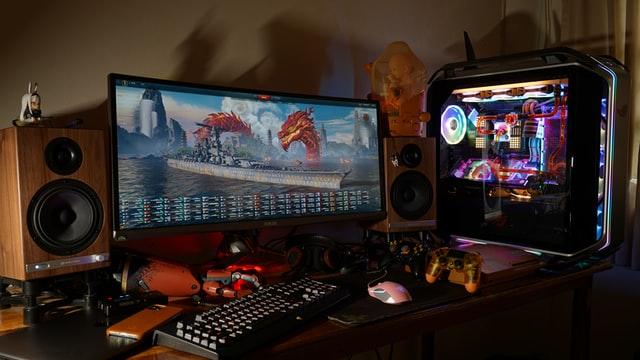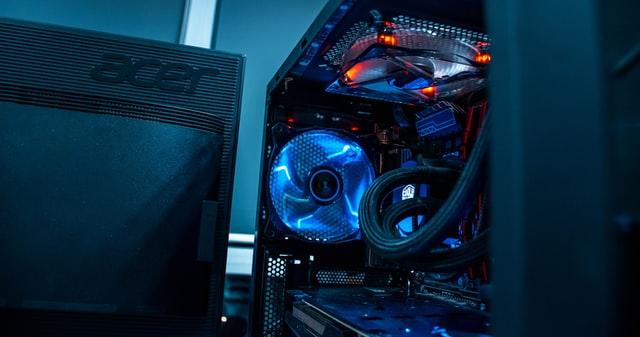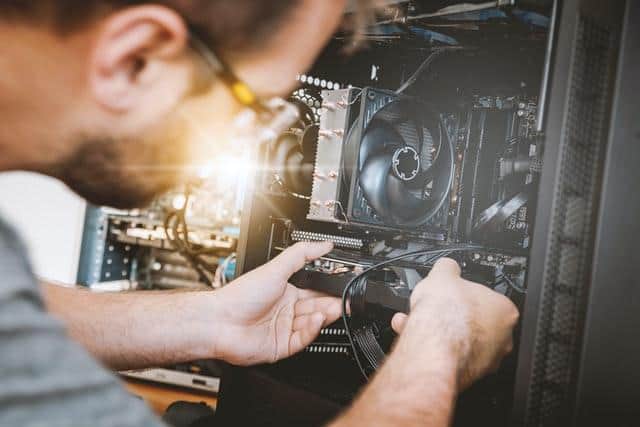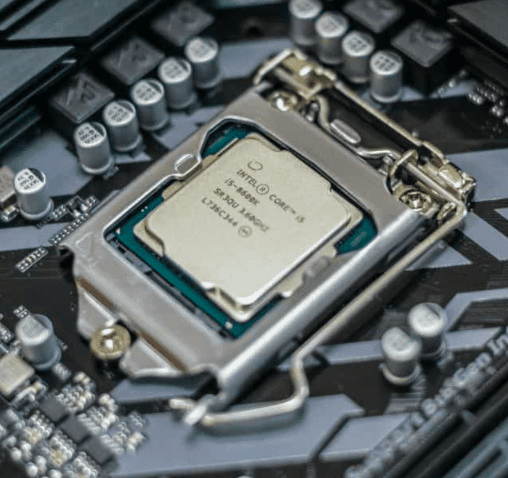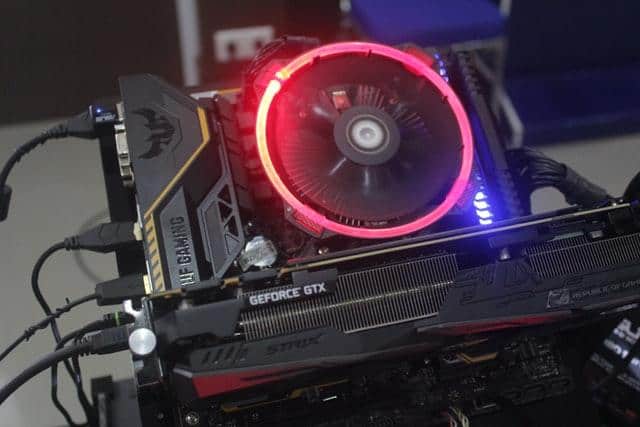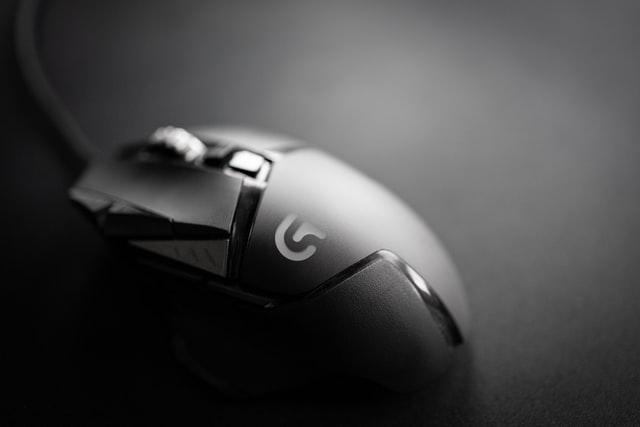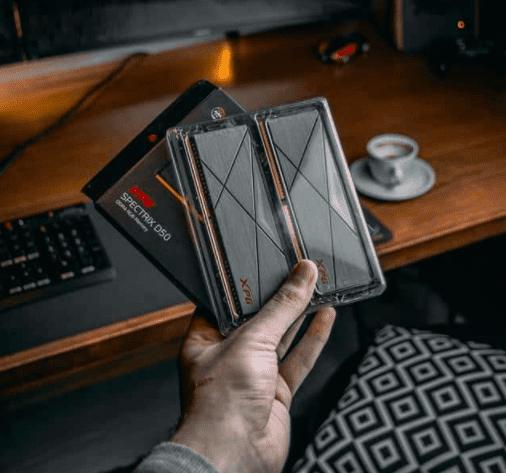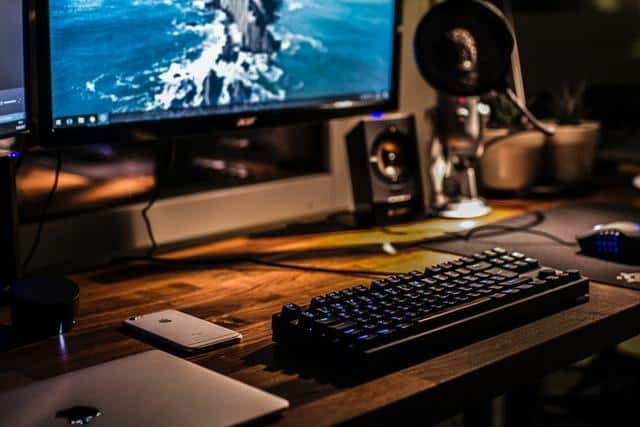Gaming is a billion-dollar industry, and according to the resources from Theesa, about 214 million people in the United States spend at least one hour a week (or more) gaming.
Of course, for PC gaming, you would need a quality gaming PC. With prices on the rise, so many different components and options, and the ability to build it yourself, the choice can be hard.
In this article, you’ll learn how much it costs to build a gaming PC and how to build one and even find out how long your new gaming PC will last you.
Also Read: Best Games Boosters For PC
How Much Does it Cost to Build a Gaming PC?
Photo by: @cia69
The thing about gaming computers is that they can cost you anywhere from around $600 up to thousands of dollars. Precisely, the upper limit is very close to slightly over $4,000.
Of course, most gamers will decide to stick to the golden middle and spend a decent amount of money without breaking the bank.
This will help build a great gaming PC that will last for at least a couple of years and allow the gamers to run the latest titles without any issues.
Keep in mind that this is the cost of building a gaming PC. Building a gaming PC always used to be the cheaper option than purchasing a prebuilt gaming PC.
While you can still find decent prebuilt gaming computers within a similar price range as a great self-built gaming PC, building your PC is still a better option.
Therefore, here’s a quick drop of the rankings and possibilities when building a gaming PC:
- Modest – $600
- Good – $800
- Very good – $850-$900
- Superb – Slightly over $1,000
- Excellent – Around $1,200
- Exceptional – Closer to $2,000
- Best of the best – Slightly over $4,000
As you can see, the difference between the cheaper gaming builds is very small. It’ll give you a feeling that you can improve at least one component for a bit of change, but in reality, these things add up pretty quickly and you’ll end up with an excellent or even an exceptional gaming PC if you don’t set your budget from the beginning.
Check Out: Best Sound Boosters For PC
What Do You Need to Build a Gaming PC?
Photo by: @constant_lb
To build a PC for gaming, these are the most crucial components you will need:
- Computer case
- Motherboard
- Central processing unit (CPU)
- Memory (RAM)
- Graphics processing unit (GPU)
- Storage
- Power supply (PSU)
- Cooling
On top of that, you will need gaming peripherals and an operating system (OS) to finally download, install, and play games.
While most people think a graphics processing unit is the most needed component for a gaming PC, in reality, a gaming PC is a combination of components. Without them, a gaming PC couldn’t run properly.
What matters the most is a choice of components that matter the most such as the central processing unit, memory, and graphics processing unit. From there, you have to ensure all other components surrounding these three main components will be good enough for a gaming PC.
While air-cooled gaming PCs are the most popular because of their efficiency and low cost, other cooling types are worth considering, such as liquid immersion cooling, ideal for higher-end gaming PCs.
Explore: Best Xpadder Alternatives
How to Build a Gaming PC (Guide)
Photo by: @jeshoots
Even though you can build a gaming PC in about 40 minutes to an hour, you should set plenty of time aside so you’re not in a rush and can complete it in one go.
The steps you’ll need to do to build a gaming PC successfully include:
- Preparing the workspace
- Preparing the gaming PC case
- Gaming PC components preparation
- Installation of the components
- Final steps
Preparing the Workspace
Photo by: @lishakov
A workspace should be a large table or a large surface where you can comfortably lay the gaming PC case and yet still have enough space for all components and tools you will need.
A very important tip is to ensure you don’t stand on a carpeted surface since it can build electrostatic discharge, damaging some sensitive gaming PC components.
The most common tool you will need is a Phillips screwdriver for almost everything you’ll have to tighten up.
Also Read: Best Gaming TVs For PC, PS4, Xbox
Preparing the Gaming PC Case
Photo by: Pascal Brändle
Even though not everything starts with the gaming PC case, you should still prepare it before you get to the components, so when you’re done with everything else, a gaming PC case will be ready.
Gaming PC cases come in all shapes and sizes. While most of the higher-priced gaming PC cases are due to aesthetics, you should consider the case size before purchase.
PC cases are based on the motherboard size, so you need to ensure that your motherboard will match the PC case. This will ensure all other components fit, such as a graphics processing unit.
Another tip is to remove both case panels to check out the space behind the motherboard that you can use to run all your cables through neatly.
Gaming PC Components Preparation
Photo by: Alexandru-Bogdan Ghita
Each component will come in its box. Now is the time to unbox all components and have them ready for the installation step.
However, if you still haven’t purchased the components and are unsure which components you would need, there are two ways to go about it.
First, it’s recommended to create a budget. Secondly, you should create a list of components to ensure you have everything and that the components match and are compatible with each other. Or, if you are building a gaming PC to play a specific game, you can check the game’s system requirements.
This will give you a clear idea of how powerful your gaming PC needs to be in order to play the game. On top of that, you will most likely be able to play other game titles with similar system requirements.
Check Out: Best Joy2Key Alternatives
Start Installing the Gaming Parts
Photo by: Daniel Hatcher
CPU
The first thing you will have to do is get your motherboard and lay it on your work surface. The first component you will install to it is the central processing unit.
Every motherboard and central processing unit is different, but the CPU should come with the instructions and the motherboard. If nothing else, you can always look up the exact model online to find a video or official instructions.
CPU Cooling
Photo by: Andy Holmes
The second thing you’ll install is the CPU cooling, which will most likely be thermal paste and a fan cooler.
Just like the CPU, there are different types of CPU coolers, so you will have to rely on the instructions to see how to attach the cooler to the motherboard after you’ve successfully installed the CPU to it.
Memory (RAM)
The next thing to install is the memory. They come in sticks that you have to plug into the correct slot on the motherboard and secure them in place.
Even though this is pretty self-explanatory, you can check the instructions or find a video on safely doing it.
Power Supply
With the motherboard still out of the gaming PC case, you should install the power supply since you’ll have the space you need inside the case so you’ll be able to organize the cables neatly.
A power supply is located either at the bottom or the top of the case and it’s attached and secured into the case with Phillips screws.
Explore: Best VR Headsets For PC Gaming
Install Motherboard
The next thing you can do is install the motherboard into the case. Every motherboard has different attaching points, but most motherboards come with about nine.
These points allow you to attach the motherboard and secure it to the case in the upright position with the help of Phillips screws.
Refer to the user’s manual if you can’t spot the attaching points on either the case or the motherboard.
Graphics Processing Unit
Since the graphics processing unit is another component that will stay upright in your gaming PC, now is the right time to install it if you’ve successfully installed the motherboard into the case.
GPU often goes at the longest, and the lowest slot is known as PCIe on the motherboard. The slot itself tends to be colored differently, and you’ll spot it as it’s the longest slot on the motherboard.
Align the graphics card with the slot, push it into the slot, secure it with the PCIe clip at the end of the slot, and one Phillips screw that helps the case support the graphics card’s weight.
Storage
The last thing you need to install for the gaming PC to run properly is the storage drive. Your case should have allocated space (slots) for the storage where you only have to slide in the storage drive.
Keep in mind that storage drives come in two sizes (2.5” and 3.5”) and you should have two bracket types in your case to accommodate both storage drive sizes.
Connect Peripherals, Test, and Install the OS
Photo by: @andreas_haslinger
The last and final step is to connect peripherals you will need for gaming and install the operating system. This includes a keyboard, a mouse, headphones/speakers, and anything else you might require.
You should also connect all cables from the power supply to components if you haven’t at this point.
After that, you can test run your freshly built gaming PC and see if everything works properly. As you face the empty storage drive, you will also need a copy of the operating system you would like to run on your PC and install it before you can get down to gaming!
Also Read: Best Gaming Laptops Under $500
Is Building a Gaming PC Hard or Can You Do it on Your Own?
Photo by: Amr Taha™
Building a gaming PC isn’t hard, and even if you haven’t done it before, you only need minimal technical skills to build your gaming PC.
Building a gaming PC is mostly stacking the components, plugging them in, and ensuring everything is installed safely and neatly in order.
However, you will need a bit more knowledge of the installation process and the components of your choice. Since there are thousands of available components, you will need to learn how your components are installed and if there’s any difference to the components you might’ve installed before.
Therefore, you can do it on your own and with plenty of research and caution, there’s nothing you can mess up as long as you follow the process.
How Much is a Cheapest Gaming PC Build Going to Cost?
Photo by: Nathan Anderson
While I’ve referenced the cheapest gaming PC in this article to be around $600, the truth is that you can build a gaming PC for a lot less.
You can build a gaming PC for about $250 or even $300, but I don’t think it’s worth it. You will have to sacrifice a lot of things along the way. You will have to cut costs drastically on some components, you won’t be able to smoothly play the latest titles on any graphics settings other than low/medium, and such a gaming PC won’t last you as long as a quality gaming PC.
Therefore, if you’re on an extremely tight budget, save up a bit more money to build a better gaming PC that will last you for longer and that you’ll be able to enjoy a lot more.
Check Out: Best Gaming Laptops For College
Is Building a Gaming PC Expensive and What’s The Most Expensive Component?
Photo by: Nana Dua
Building a gaming PC can be very expensive, but it doesn’t have to be. A great thing about building your gaming PC is that you get to set the budget and choose one of the components you’ll put inside your computer.
Also, you know your needs the best, so you will create a custom gaming PC that will fit your needs.
The most expensive component is often the graphics processing unit since it can cost 30-40% of the whole gaming PC.
What Should You Buy First When Building a Gaming PC?
Photo by: @anirudh_gadgil
While gaming PC cases are important, you can always buy one later. The most important component is the motherboard, where CPU and GPU follow.
The motherboard will tell you what CPU you can install and what type of RAM you can install.
Also, the motherboard size will determine the size of a gaming PC case you need, so you should always try and purchase the motherboard first as it’s the core of every gaming PC.
Explore: Best Gaming Laptops For Kids
How Long Will a New Gaming PC Last?
A gaming PC can last for as long as the games don’t upgrade to a different and more demanding engine that powers the game.
Therefore, even budget gaming PCs can last for about two to three years.
A high-end gaming computer will be able to last for at least five years, supporting the latest PC game titles without any hiccups.
Is Buying a Used Gaming PC Worth it or Should You Build a New Gaming PC?
Photo by: @casparrubin
If you don’t have a big budget and you’ve been considering purchasing a used gaming PC, you might be onto something.
Used gaming PCs can give you a more powerful setup for less money. But of course, used gaming PCs have a higher risk of component failure.
But since you can replace each component inside a gaming PC without any issues, buying a used gaming PC is not such a bad idea.
Of course, you will be able to easily make the right decisions when you set your budget and create a list of gaming PC components you’ll need to meet your gaming needs.
If your budget doesn’t meet your needs and demands, purchasing a used gaming PC won’t seem like such a bad idea.
Why Do Gaming PC Parts Cost More than Before?
Photo by: @ocollet
PC parts are relatively cheaper than they used to be. When building a gaming PC, you can get more for the money than you could get before.
The downside of technological advancements is that games and game engines will overpower your gaming PC sooner rather than later, and you’ll have to build a new one.
But you might have noticed an increase in certain gaming PC component prices because of the supply and demand issues.
Some manufacturers couldn’t keep up with the sudden spike in demand which is why some components, such as graphics cards, CPUs, and GPUs, increased in price.
Also Read: Best Quietest Gaming Laptops
Conclusion
The great thing about building a gaming computer for your own needs is that you can set your budget and wisely choose components that stay under your budget and still build a very decent gaming PC.
Therefore, a gaming PC can cost you anything from a couple hundred dollars up to thousands of dollars.
Your needs and requirements will also play a role in how powerful your gaming PC needs to be. The more powerful your computer needs to be, the more money you’ll have to part with to build a powerful gaming computer.
Tom loves to write on technology, e-commerce & internet marketing.
Tom has been a full-time internet marketer for two decades now, earning millions of dollars while living life on his own terms. Along the way, he’s also coached thousands of other people to success.
